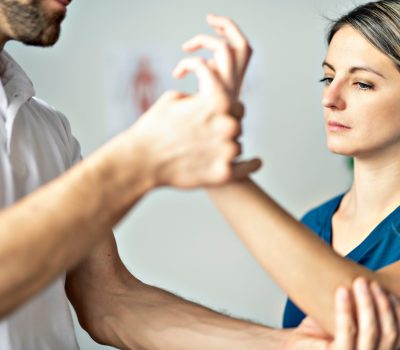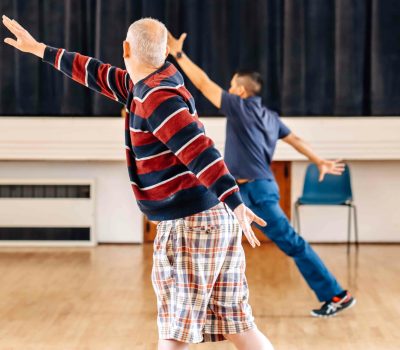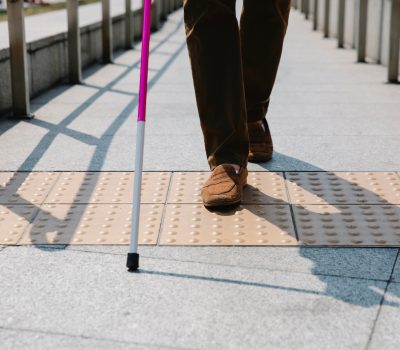Walking after a Spinal cord injury is a broad topic, firstly I think it’s important to define what a spinal cord injury is and how this may affect your walking.
Types of spinal cord injury:
An injury to your spinal cord can occur in multiple ways, the most common of which are through sudden trauma, infection or other medical conditions such as cancer that may compress the spinal cord.
The impact of spinal injuries can vary greatly and this often depends on both the level of the spine that is affected and also the extent of the injury. As a general rule your physical function will be affected below the level of the injury and the extent of your injury will be defined as a complete injury or an incomplete injury depending on how much of the spinal cord is impacted.
What symptoms of a spinal cord injury may affect my walking?
Spasms
You may experience spasticity in your legs or arms as a result of your injury – see our blog post on spasticity for more information (link). This can be in the form of shaking (or clonus) as well as muscles feeling tight, hard to move or unresponsive. Spasticity can, in some cases, be useful to help keep you upright if your muscles are weak.
Muscle weakness
Your spinal cord supplies information from your brain to your muscles, after an injury it’s likely some or all of your muscles below the injury may be affected. The effects can be graded and the effects vary between no muscle activity to slight weakness, again this is defined by the extent of your injury.
Pain
Your spinal cord supplies information from your brain to your muscles, after an injury it’s likely some or all of your muscles below the injury may be affected. The effects can be graded and the effects vary between no muscle activity to slight weakness, again this is defined by the extent of your injury
Co-ordination
Sometimes your muscles may be working well but there may be a timing issue. You may struggle to place your feet in the right position or move your body smoothly.
Sensory loss
In some cases your movement may be there but you may have lost or have altered feeling such as pins and needles. This can really affect how you use your legs and the rest of your body (walking doesn’t just require your legs), often people describe not knowing what their feet are doing or where they are and placing weight through a leg you can’t feel can be daunting.
These are just a few of the more common physical symptoms that can affect walking and are by no means exhaustive, everyone is different. It is important to note you may have some/none or all of these difficulties and this may depend on the stage of rehabilitation you are at.
What can I do to improve my ability to walk?
Firstly it’s important to note that walking is a set of really complex patterns that require strength, flexibility and timing in order to make it efficient. The symptoms described above can impact on these components and cause walking to become inefficient or unstable as a result. We are going to keep with the theme and give you some ideas about how to address the symptoms above in order to improve or even begin walking.
Spasms
Sometimes having spasms in your legs is useful, especially if you have lots of weakness as it can help to keep you upright, however most of the time it isn’t. What we know about spasms and tightness in muscles is that they respond to two main things, stretching and Botulinum Toxin (Botox) or medication. This is well evidenced as the gold standard for managing muscles with spasticity (see our other post on spasticity for more details). The main concepts are that a prolonged stretch is the best, depending on the joint this could be anything from 30-60 minutes in a standing frame, to 4-6 hours wearing a resting splint. Finding ways to stretch your body and change postures regularly is important.
Muscle weakness
You need your muscles to be strong in order to work against gravity, strengthening exercises are really important. Think of your muscle as a Christmas tree with lots of little lights in it. Every time you contract your muscles, the lights turn on. However when muscles are weak, not all the lights come on, leading to a less powerful movement. By repetitively moving and contracting your muscle you are encouraging more of those lights to come on over time, as well as building the size or bulk of the muscle. Seeking guidance from a movement specialist with knowledge of spinal injury is key to giving you the right exercises for your ability. In early stages you may explore Functional Electrical Stimulation (FES) or muscle stimulation to help contract the muscles (more information on this in our FES article).
Pain
Management of pain is often tricky and complex, there are different types of pain that respond to different stimuli, in truth it’s a whole other topic in itself. Medical management is often the first line, and your medication will depend on your type of pain and symptoms. Outside of medical management we may use other techniques, we know that movement can help reduce pain in a lot of instances to help relieve sore muscles and joints. Often with pain you might be afraid to move and a good physiotherapist will build your confidence to move in the right way and explore your pain with you.
Co-ordination
Practise with co-ordination is important for the timing of your walking and may include functional things like practicing walking itself or other exercises to improve your stability and control before you attempt walking. Your exercises will depend on your level of ability but as a general rule repeating those things you find difficult will help to improve them.
Sensory loss
With sensory loss we aim to expose the affected area to different types of stimulus, this could be hot/cold therapy or it might be using different textures or massage to help stimulate the nerves in that area. Your physiotherapist may explore different positions, for example lying on the affected side or wearing a compression garment to help engage the nerves. We may also use electrical stimulation to contract the muscles or provide a “pins and needles” type sensation.
Is there technology out there to help?
Absolutely, and depending on your level of ability there will be something out there for you. It could be something like an FES system to help with muscle activity, or a MOTOmed exercise bike to help move your legs and arms. You may be standing and want to explore the different standing frames on the market (go to our equipment review sector to see more about these). Finally there are new products such as Exoskeletons, a form of robotic that will help you walk, these are still relatively new and as a result quite expensive, although you may be able to arrange a free trial of one with guidance from a physiotherapist.
In summary, there is a lot out there to help you explore walking, whether you are newly diagnosed or further down the recovery journey there is something there to help. Seeking guidance from a specialist physiotherapist, occupational therapist or other exercise professional – see our clinic finder to find someone near you.






